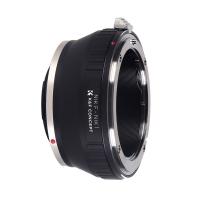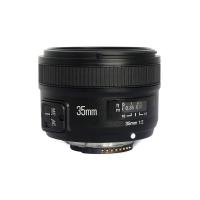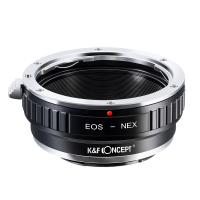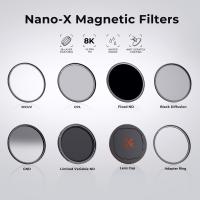What Is A Scanning Electron Microscope Good For ?
A scanning electron microscope (SEM) is a powerful tool used for imaging and analyzing the surface of a wide range of materials. It is particularly useful for studying the topography, morphology, and composition of samples at high magnification and resolution. SEMs are commonly employed in various scientific fields, including materials science, biology, geology, and nanotechnology. They can provide detailed information about the surface features, such as the shape, size, and texture of objects, as well as the elemental composition and distribution within the sample. Additionally, SEMs allow for the examination of samples in a vacuum environment, enabling the imaging of non-conductive materials without the need for special sample preparation techniques. Overall, the scanning electron microscope is a valuable tool for researchers and scientists to investigate the microstructure and properties of diverse samples.
1、 High-resolution imaging of surface topography and morphology.
A scanning electron microscope (SEM) is a powerful tool used in various scientific fields for high-resolution imaging of surface topography and morphology. It provides detailed information about the surface features of a sample at a much higher resolution compared to other microscopy techniques.
One of the primary applications of SEM is in materials science and engineering. It allows researchers to examine the surface structure of materials, such as metals, ceramics, and polymers, at a nanoscale level. This information is crucial for understanding the material's properties, such as its mechanical strength, surface roughness, and composition. SEM can also be used to investigate the effects of various treatments or processes on the material's surface, such as corrosion, wear, or deposition of thin films.
In the field of biology, SEM is used to study the surface morphology of biological samples, including cells, tissues, and microorganisms. It provides detailed images of cell structures, such as cell membranes, organelles, and surface features. This information is valuable for understanding cellular functions, studying disease mechanisms, and developing new medical treatments.
Moreover, SEM has found applications in the field of nanotechnology. It enables researchers to visualize and characterize nanoscale structures, such as nanoparticles, nanowires, and nanotubes. This is essential for designing and optimizing nanomaterials with specific properties for various applications, including electronics, energy storage, and catalysis.
In recent years, there have been advancements in SEM technology, such as the incorporation of energy-dispersive X-ray spectroscopy (EDS) and electron backscatter diffraction (EBSD) detectors. These additions allow for elemental analysis and crystallographic information, respectively, enhancing the capabilities of SEM. Additionally, there have been developments in environmental SEM, which enables imaging of samples under controlled atmospheric conditions or even in liquid environments, expanding the range of samples that can be studied.
In conclusion, a scanning electron microscope is an invaluable tool for high-resolution imaging of surface topography and morphology. Its applications span across various scientific disciplines, including materials science, biology, and nanotechnology. With ongoing advancements in technology, SEM continues to evolve and provide researchers with new insights into the microscopic world.

2、 Analysis of elemental composition using energy-dispersive X-ray spectroscopy.
A scanning electron microscope (SEM) is a powerful tool used in various scientific fields for imaging and analyzing samples at high magnification. One of the key applications of SEM is the analysis of elemental composition using energy-dispersive X-ray spectroscopy (EDS).
EDS is a technique that allows researchers to determine the elemental composition of a sample by measuring the characteristic X-rays emitted when the sample is bombarded with an electron beam in the SEM. This information is crucial in many fields, including materials science, geology, biology, and forensics.
In materials science, SEM-EDS is used to study the composition and distribution of elements in a wide range of materials, such as metals, ceramics, polymers, and composites. It helps researchers understand the structure-property relationships and identify impurities or defects that may affect the material's performance.
In geology, SEM-EDS is employed to analyze rocks, minerals, and soils. It aids in identifying mineral phases, determining their abundance, and characterizing their chemical composition. This information is valuable for understanding geological processes, such as the formation of minerals and the evolution of rocks.
In biology, SEM-EDS is utilized to investigate the elemental composition of biological samples, such as cells, tissues, and organisms. It helps in studying the distribution of elements within biological structures, identifying trace elements, and understanding their role in biological processes.
Forensic scientists also rely on SEM-EDS for analyzing trace evidence, such as gunshot residue, fibers, and paint chips. The elemental composition obtained from SEM-EDS analysis can provide valuable information for criminal investigations.
The latest advancements in SEM-EDS technology have further enhanced its capabilities. For instance, modern SEM-EDS systems offer higher spatial resolution, faster data acquisition, and improved sensitivity. Additionally, the integration of advanced data analysis techniques, such as machine learning and artificial intelligence, has enabled more efficient and accurate interpretation of SEM-EDS results.
In conclusion, a scanning electron microscope is an invaluable tool for analyzing the elemental composition of various samples using energy-dispersive X-ray spectroscopy. Its applications span across multiple scientific disciplines and continue to evolve with advancements in technology, making it an essential instrument for researchers in their quest for understanding the world around us.

3、 Examination of material microstructure and crystallography.
A scanning electron microscope (SEM) is a powerful tool used for the examination of material microstructure and crystallography. It provides detailed information about the surface morphology, topography, and composition of a wide range of materials. SEMs are widely used in various fields such as materials science, nanotechnology, biology, geology, and forensics.
One of the primary applications of SEM is the examination of material microstructure. It allows researchers to visualize and analyze the surface features of materials at high magnification and resolution. This is particularly useful for studying the morphology of materials, such as the shape, size, and distribution of particles, grains, or fibers. SEM can also provide information about the surface roughness, porosity, and defects in materials.
Another important application of SEM is the investigation of crystallography. SEM can be used to determine the crystal structure and orientation of materials. By analyzing the backscattered or secondary electrons emitted from the sample, researchers can obtain information about the crystallographic orientation, grain boundaries, and defects in materials. This is crucial for understanding the mechanical, electrical, and optical properties of materials.
In recent years, there have been advancements in SEM technology that have further expanded its capabilities. For example, the introduction of field emission electron sources has improved the resolution and imaging capabilities of SEMs. Additionally, the integration of energy-dispersive X-ray spectroscopy (EDS) and electron backscatter diffraction (EBSD) systems with SEMs allows for simultaneous elemental analysis and crystallographic characterization of materials.
Overall, the scanning electron microscope is an invaluable tool for the examination of material microstructure and crystallography. Its high-resolution imaging capabilities and ability to provide detailed surface information make it an essential instrument in various scientific and industrial applications.

4、 Characterization of particle size and shape in nanotechnology.
A scanning electron microscope (SEM) is an invaluable tool for the characterization of particle size and shape in nanotechnology. It allows researchers to examine the surface of materials at a high resolution, providing detailed information about the morphology and structure of particles.
One of the primary applications of SEM in nanotechnology is the measurement of particle size. By using SEM, researchers can accurately determine the size distribution of particles in a sample. This information is crucial for understanding the behavior and properties of nanomaterials, as particle size can greatly influence their physical and chemical characteristics. Additionally, SEM can provide insights into the aggregation and agglomeration of particles, which is important for understanding their stability and reactivity.
Moreover, SEM enables the visualization of particle shape. Nanoparticles can exhibit a wide range of shapes, such as spheres, rods, wires, and flakes. The ability to precisely characterize particle shape is essential for optimizing the performance of nanomaterials in various applications. For example, in drug delivery systems, the shape of nanoparticles can affect their cellular uptake and release kinetics. In catalysis, the shape of nanoparticles can influence their catalytic activity and selectivity.
In recent years, there have been advancements in SEM technology that further enhance its capabilities. For instance, the integration of energy-dispersive X-ray spectroscopy (EDS) allows for the elemental analysis of particles, providing information about their chemical composition. This combination of SEM and EDS enables researchers to not only determine the size and shape of particles but also understand their elemental composition, which is crucial for designing and optimizing nanomaterials for specific applications.
In conclusion, a scanning electron microscope is an essential tool for the characterization of particle size and shape in nanotechnology. It provides valuable insights into the morphology, structure, and composition of nanoparticles, enabling researchers to optimize their properties for a wide range of applications. With advancements in SEM technology, its capabilities continue to expand, allowing for more comprehensive and detailed analysis of nanomaterials.









































